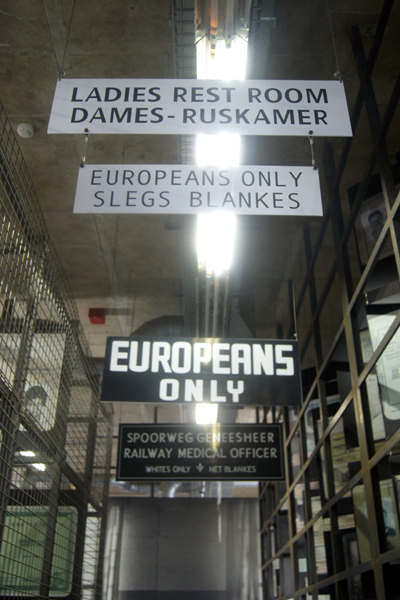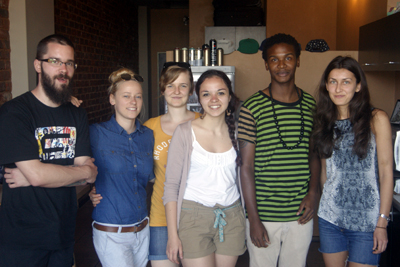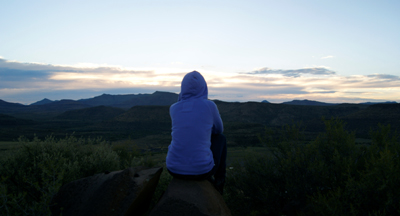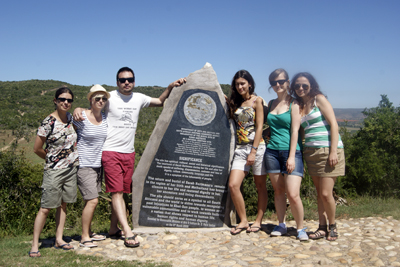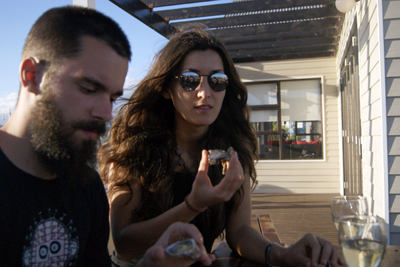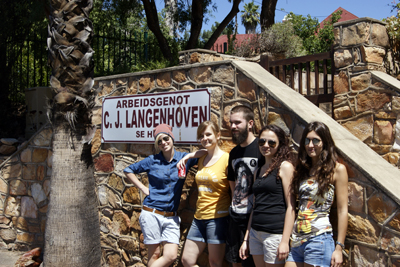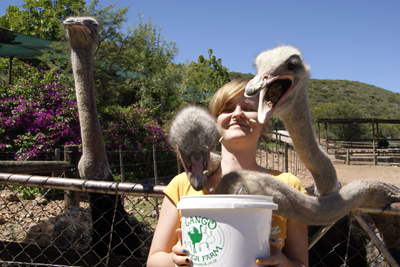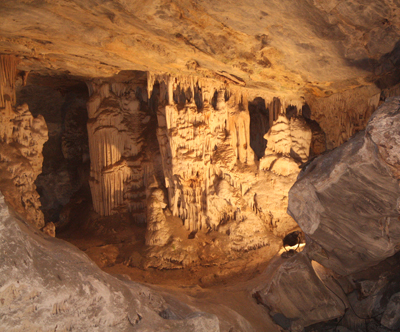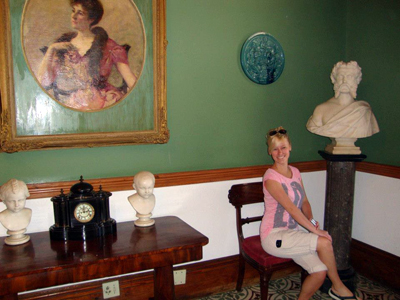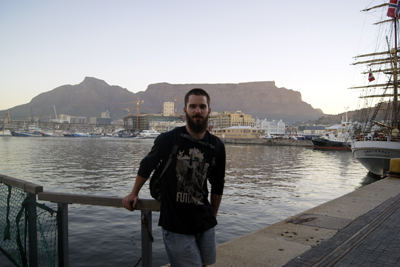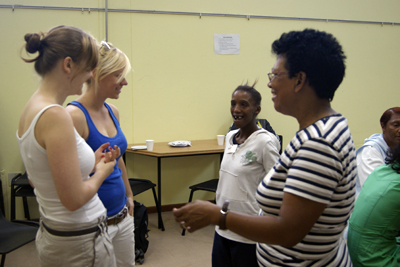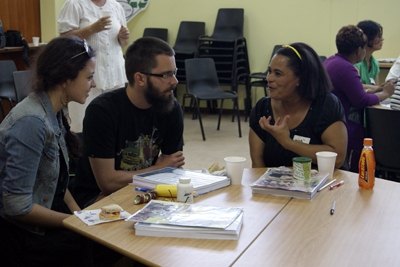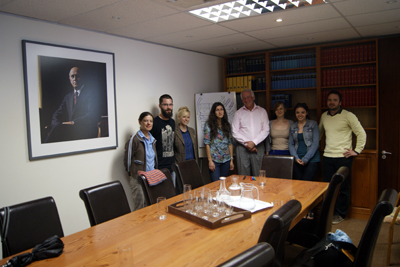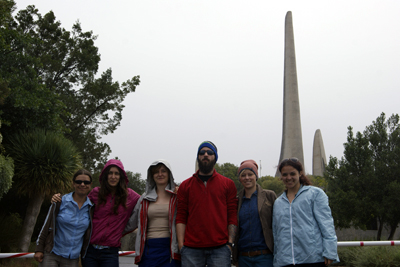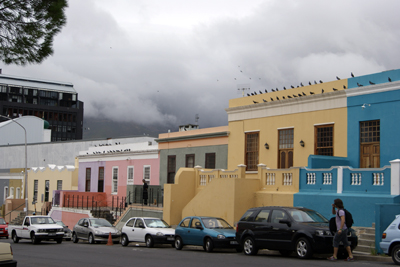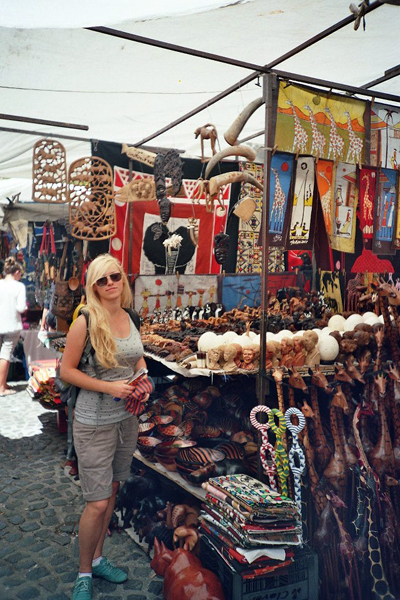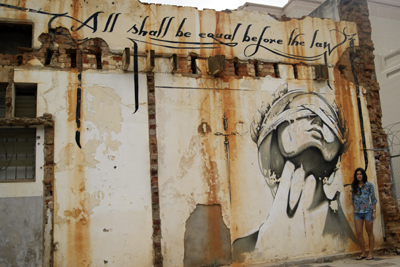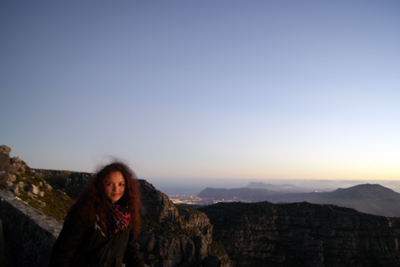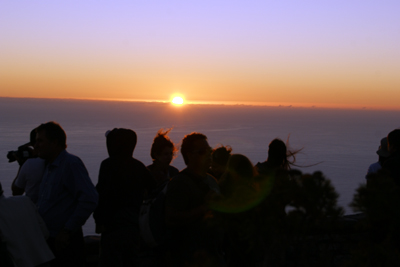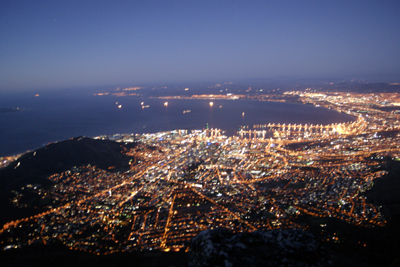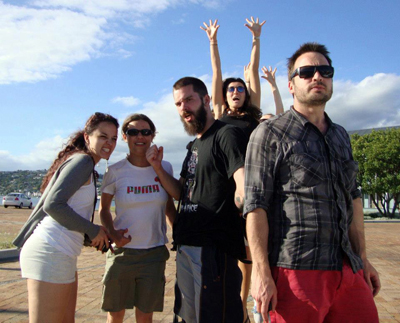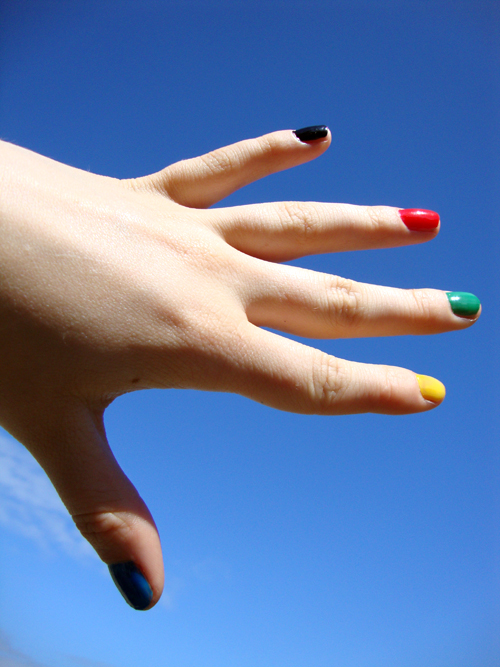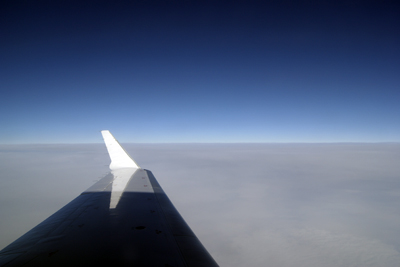|
|
|||||
|
|
The Milestones Tour Diary5 February After a long 10
hour changeover in Frankfurt, but a much longer year of preparations,
we’re happy to be flying over African skies. Somewhere over Zimbabwe we
drop below the clouds and we begin to discern the shapes of cities below us. The sheer
size of Johannesburg draws a gasp from the tour party as we drop down onto the
30+ tarmac. The first
impression of South Africa is its friendliness – ‘Sawubona!’ we are
welcomed
into the airport building, where everyone seems to be going about
business as
usual while we buzz with excitement through passport control.
Currencies are exchanged and we are set to go. Even though we’ve just
come from
sub-zero temperatures, we are glad to slip back into the
air-conditioned tour
bus, variously (and inexplicably) dubbed ‘Bruce’ and ‘Die Ossewa’. First things first: we stop off for some biltong and meat for the first braai (barbecue) of many to follow. At the Union Buildings, seat of the South African government, we take in a panoramic view of the capital, Pretoria. Accommodation is provided by lecturer Karen Kuhn’s father, whose B&B is far beyond our limited budget – a swimming pool allows us to prepare European skins for the inevitable sunburn. In the evening we welcome an unexpected visitor: former colleague Fanie Olivier travelled a solid 700km to see us!
6 February A decent night’s
sleep makes up for the long flight, and a big South African breakfast prepares
us for the busy day ahead. Professor Willie Burger welcomes us at the University of Pretoria, where we visit the campus and meet staff and students of the department. Then it’s off to the Voortrekker
Monument on the hills overlooking Pretoria. In 1938, the 100-year centenary of
the Great Trek, an important symbolic event in the history of the Afrikaner,
this monument was completed and hosted a massive gathering of hundreds of
thousands of Afrikaners celebrating their nationhood. 7 February Opposite the
Voortrekker Monument stands Freedom Park, where those who died in the many
struggles for freedom in South Africa are commemorated. A 651-meter long wall
carries the names of individuals from various backgrounds who died Just before lunch
we drive the 50 or so kilometers to Johannesburg, where a full day awaits us.
First up is the Mai Mai Muti Market, which is without comparison in Europe. Muti is traditional medicine, usually
derived from parts of animals or plants prepared by a sangoma (traditional healer). After our usual snapshots, we are
informed that one is not allowed to take pictures here. Unless, of course, one
is prepared to pay a small fee. (Which we do.) Although Mai Mai
is marketed as a tourist destination, it’s not unlikely that the reputation of
Johannesburg’s city centre scares off many visitors. We are greeted heartily:
‘ama-Tourists!’ and ‘Thula, mlungu’ (relax, white man) are some of the calls
announcing our arrival. After Mai Mai we
make our way to the famous Soweto A few metres down
the road we enjoy a traditional African meal at Sakhumzi restaurant, before
leaving for the Market Theatre in the CBD. Mies
Julie is an internationally acclaimed production touching on many of the
issues which dominate the South African socio-economic and cultural landscape
(e.g. land ownership, collective guilt, interracial relationships). After the
ovation, a tired group of travellers proceed to their respective host parents.
70 km south of
Johannesburg lies the Vanderbijlpark campus of Northwest University. Recently,
a memorandum of understanding was signed between our universities, allowing our
students to do part of their MA’s here, and vice versa. It is not often that
one finds a national park on a campus, but here students pass between springbok
and wildebees on their way to class. For a few hours,
we discuss possibilities for co-operation between our universities, after which
we are treated to a traditional lunch of bobotie on the banks of the Vaal
river. On the way back
to Johannesburg, we stop by the Apartheid Museum, where the full picture of
this oppressive system is brought home and leaves us in a less than festive
mood. However, another braai with professors and students from the University
of Johannesburg waits, and while lecturer Tertius Kapp looks after the culinary
side of things, we watch the sun set on the Johannesburg skyline. 9 February After a quick
meeting with upcoming young artist Fuzzy Slipperz (and promises to attend his
next Berlin exhibition), we make our way to Bloemfontein. A four-hour drive through
typical Highveld thunderstorms as the gold reefs gradually make way for
agriculture and the relaxed tempo of rural South Africa. In the city itself we
check in to Naval Hill Backpackers (voted #1 in the country) before the
customary braai, this time with students of the University of the Free State. 10 February 11 February Deciding to stick to gravel roads, we experience a few tense moments when our GPS (fondly named ‘Mpho’, from the Sesotho word for ‘gift’) has to admit that she no longer knows where we are. Between instinct, memory and a hand-out map we navigate to and fro over unknown farmlands. Eventually the smooth tar of the N6 welcomes us again and we make good time to East London, where staff and students at the University of Fort Hare await us. They are stunned by the Poles’ competency in Afrikaans, and multi-cultural, multi-lingual afternoon turns into a very special meeting for all. 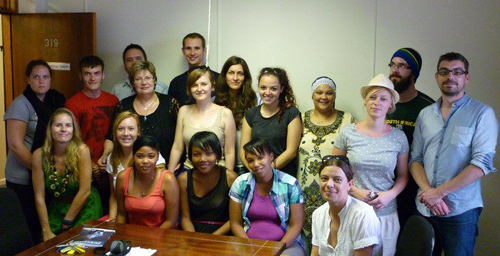 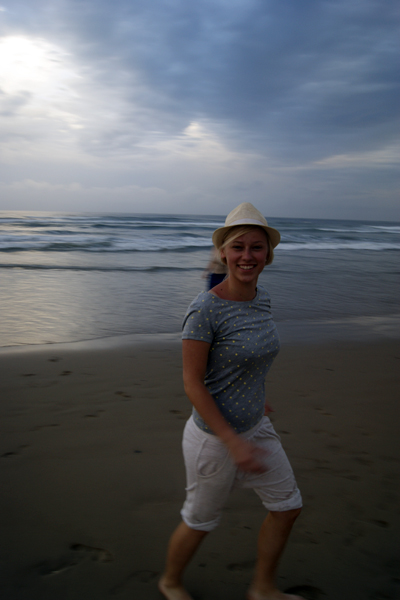 The
demanding tour schedule calls us on, and after a brief swim in the warm Indian
Ocean, we press on to Grahamstown. Tired and hungry travellers fall onto their
beds while a take-away pizza expedition turns into a bizarre encounter with a
herd of cows walking down Main Street! 12 February We spend the
morning in Grahamstown, in an area that is still known as 'frontier country', an atmosphere which can, to some The town itself was founded in 1812 as a
military outpost of the expanding British Colony, and the British Settlers
Monument reminds one of the hardships endured by these settlers, who were
mostly lured to the colony under false pretenses, and in fact served as ‘buffer
population’ in the mind of colonial authorities, boost the British presence on
the eastern border. It was also the site of a famous battle between the Xhosa
under the leadership of Makhanda Nxele, and the British forces, who narrowly
won thanks to artillery reinforcements. 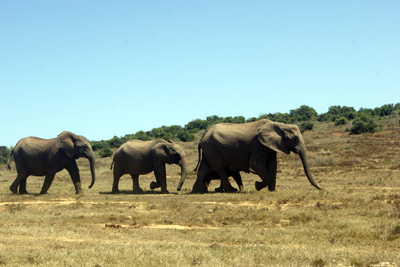 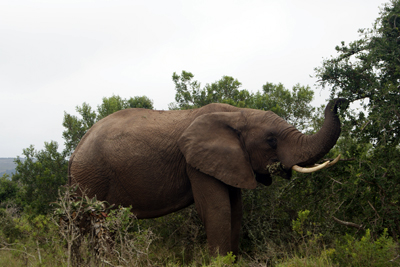 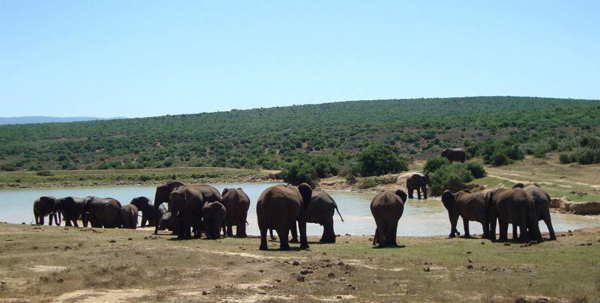 13 February Once again we are
off – we interrupt our 300km trip to Nature’s Valley with a visit to the grave
of Saartje Baartman. This Khoi woman (willingly) took part in a freak show in
Britain in the 19th century. However, in France she was traded between
different exhibitors and ended up exploited for sex shows and by scientists who
were fascinated by her unique anatomy. In 1815 she died a lonely death as a
prostitute in Paris. Almost 200 years later (2007), her body was brought back
to South Africa and reburied above the small town of Hankey, where she spent
her youth. Saartje still serves as a figurehead of the exploitative
relationship between Europe and Africa, and has been the subject of much
writing (also by our own professor Koch) as well as a recent film (Venus
Noire). In Nature’s
Valley we are once again treated to breath-taking natural panoramas, a few
hours on the beach, and in the evening, phosphorus lights up the ocean waves a
luminescent green, a special occurrence which can hardly be transmitted in
words. 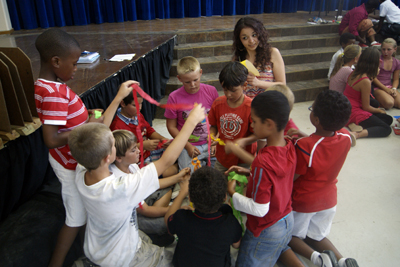 14 February 14 FebruaryAfter meeting with pupils of Plettenberg Bay Secondary School, we make our way up the Keurbooms River to spend the night in the indigenous Tsitsikamma forest. Initial confidence evaporates as we realise that rowing up the river is much harder work than we imagined. Each bend of the river takes the highway and rush of human activity further away, until only the conversations of monkeys and birds over the river that remain. The famous Knysna Loerie’s barking call has us looking for the flash of red as it spreads its wings. With only one canoe capsizing, we call the day a success, and settle in around a campfire. 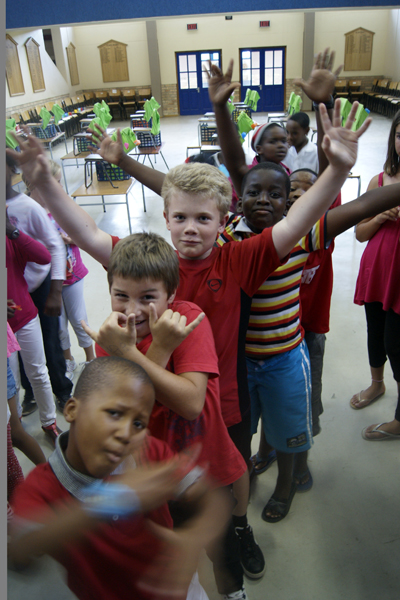 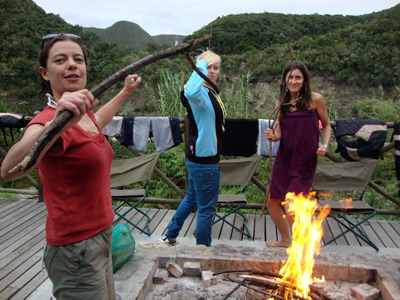 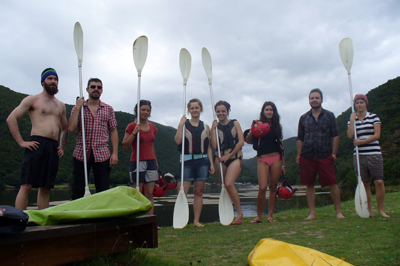
15 February An easier trip down
the river had us on the road by late morning, and heading further east we
passed through the picturesque town of Knysna, famous for the unlikely mix of
beer, oysters, the coelacanth (a prehistoric fish), indigenous furniture and a
Rastafarian community. We met up with a second-generation Polish immigrant,
Natasza Millar, at Mitchell’s, one of the few local breweries in South Africa.
After tasting a few fresh-picked oysters, we head inland, towards Oudtshoorn.
On the other side of the mountain range everything changes once again – from
the indigenous forests of Tsitsikamma to the semi-desert of the Klein Karoo. This is an especially interesting part of South Africa, famous as the home of many authors (such as CJ Langenhoven or Pauline Smith), and these days the centre of one of the biggest arts festivals in the country, the KKNK (Klein Karoo Nasionale Kunstefees). 16 February Some other famous
inhabitants of Oudtshoorn include the ostriches and crocodiles which are A must-see in
Oudtshoorn is the Cango Caves, a natural cave formation extending several
kilometres into the earth. Initially, these caves served as home for the Khoi
and San peoples living in the area throughout the Middle and Later Stone Ages,
but when farmer Jacobus van Zyl stumbled From the caves we
headed up another mountain range, gingerly creeping over the spectacular but
precarious Swartberg pass. On the other side Prince Albert is another gem of
the Karoo, now well known as a retreat for city-dwellers. Artist Hennie Boshoff
traded Paris for this rustic town, where his garden testifies to an imagination
that has travelled further than simple geography.
17 February From Prince
Albert we make our way to Cape Town, with a lunch stopover in Matjiesfontein. This
town consists of little more than a hotel, a train station and two streets,
only one of which is tarred. But the British flag rippling on the town edge
suggests a rich history: this town has been declared a national heritage site,
and enters the historical record at various interesting points: it was the site
of the first cricket match in South Africa, played an important part during the
Anglo-Boer War, and paid host to various famous visitors throughout its history
– the most famous among them probably author Olive Schreiner, who did much of her most imporant writing here. From
Matjiesfontein we follow the straight, broad N1 as the semi-desert of the Karoo
becomes the mediterranean climate of Cape Town. Vineyards and orange groves
appear, and the mountains grow steep before we pause on the Du Toitskloof Pass
for our first glimpse of the universally recognisable Table Mountain. Cape Town is best
understood as a harbour city, a meeting point of international trade routes and
cultural influences. It therefore makes sense to pay our first visit to the V&A
Waterfront, to many the entry point to one of South Africa and the world’s most
spectacular cities.
18 February To some, the Cape
Flats are a shadowy reminder of the forced removals that split Cape Town
along
racial lines. Today, these communities still experience many social
problems
such as poverty, gang violence and drug abuse. The Stigting vir
Bemagtiging
deur Afrikaans (Foundation for Empowerment through Afrikaans) is a
social
upliftment NGO which aims to teach skills and empower people through
the
Afrikaans language. Our sponsor, Media24, is one of the chief
supporters of the SBA. As on the Multiversity Tour of 2011, our meeting
with the
teachers, students, and this time also the CEO, is nothing less than
overwhelming. The women learning business skills and care techniques at this Our visit to the University of Cape Town coincides with a rugby match, and ironically, after a round trip of 100 km, we look back to where we started this day – the Flats. 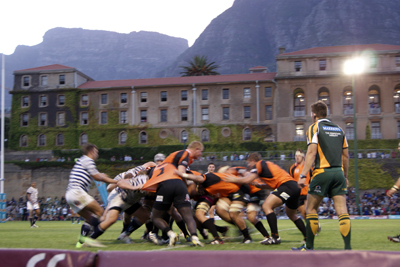 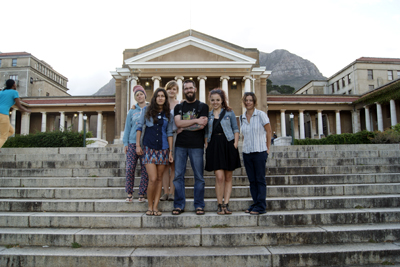 19 February An elucidating explanations of how South African society works is presented by mr.
Dave Steward of the FW de Klerk Foundation. A former ambassador of South Africa
to the UN, mr. Steward’s take on the country explains many of the questions
even South Africans have not formulated to themselves, and sketches a future
development plan which contradicts pessimists and optimists alike. He also
explains the work of the foundation set up by former president De Klerk in
safeguarding the progressive constitution on which the New South Africa is
built.
20 February The schedule has
taken its toll. To avoid total meltdown, we take a day off, during which
everyone experiences Cape Town as they choose – a list which includes the Iziko
Museums, the Bo-Kaap neighbourhood (which in a sense can be considered one of
the homes of the Afrikaans language as it was born in the mouths of Muslim
workers), Clifton Beach, Greenmarket Square, and Long Street. In the evening we
braai one last time at lecturer Tertius Kapp’s family home.
21 February For all practical purposes, the last day of our journey, and a full one at that. We start the day off in Gugulethu, at the famous Mzoli’s butchery. However, very little is happening at Mzoli’s, so we head back to Cape Town and the Nelson Mandela Gateway for a trip to Robben Island. From the 17th century onwards, this island had served consecutively as place of banishment, leper colony, and political prison. Our guide Zim was himself a prisoner here during the 1980s, and can tell us first-hand about the hardships Mandela and his comrades endured during the decades they were kept here – in sight of the mainland, yet far out of reach. 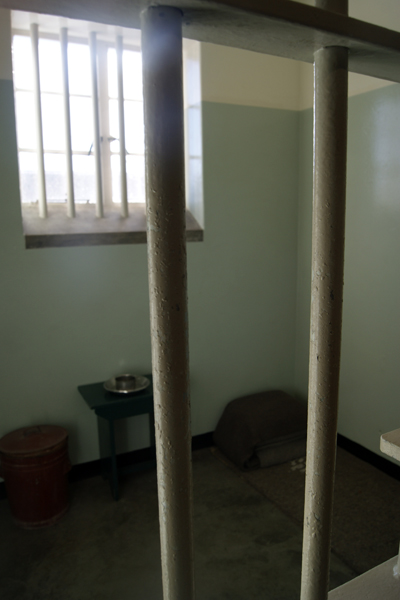 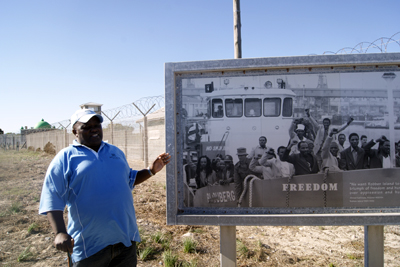 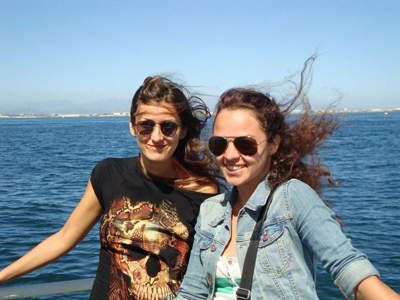 We return to the
harbour in time to catch the last cable car to the top of Table Mountain,
presenting a view that is etched into memory forever. On one side the sun sets
over the Atlantic Ocean, on another the peninsula stretches out into a milky
fog, and on yet another the city lights of Cape Town stretch towards the
horizon. We say our own goodbyes to South Africa, a country that is
overwhelming in its beauty, and captivating in its complexity.
22 February After several hours on airports and airplanes we are finally in the air, heading for Frankfurt and eventually Poznań. The outcomes of this journey for each of us are not yet identifiable. But they are certain to become clear over the coming months and years.
This trip was made possible by generous sponsorship of Pepco, Media24, the Faculty of English, Adam Mickiewicz University, Solidariteit, and Honorary Consul Czesław Fiedler, all of whom we would like to acknowledge here. Thank you to all who support us! |
Uniwersytet im. Adama
Mickiewicza w Poznaniu Wydział Anglistyki    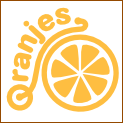   Niderlandy RPA w UAM Dutch & South African Studies Poznań |
|||

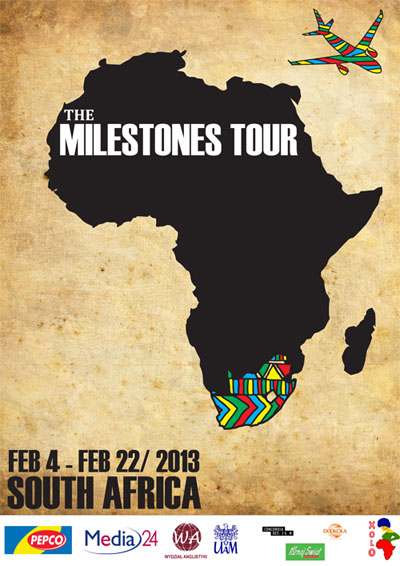
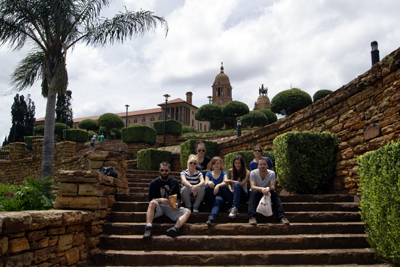
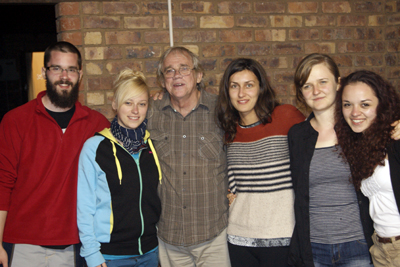
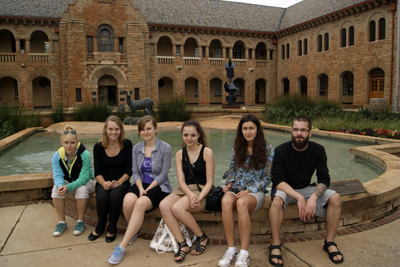
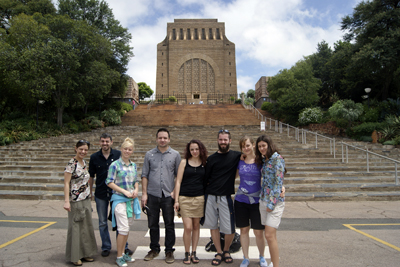
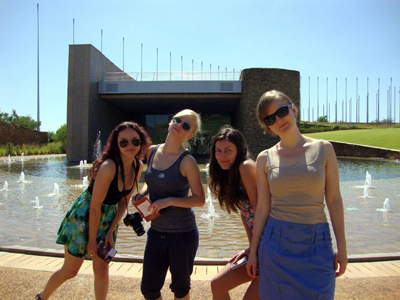
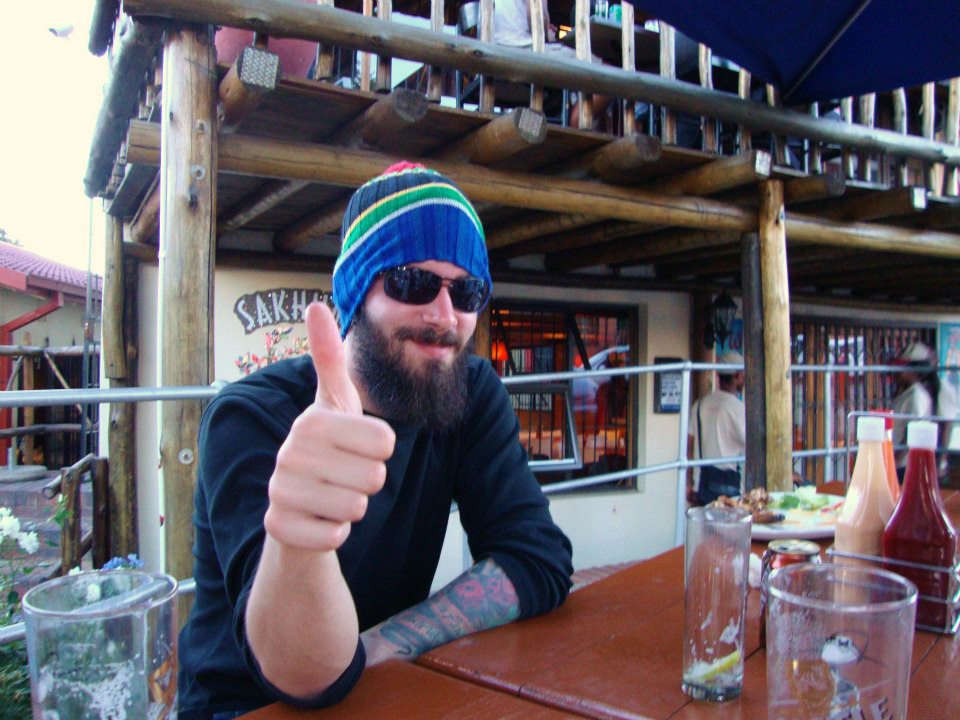

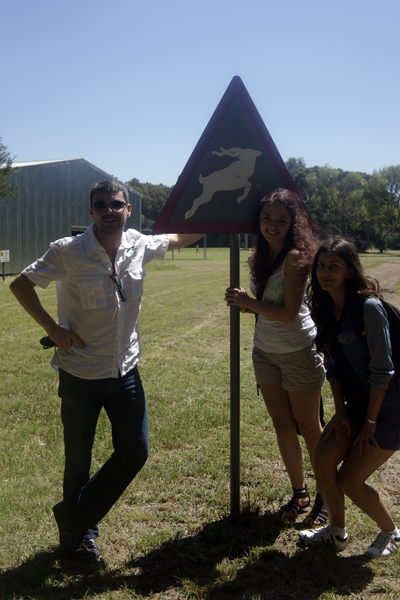 8 February
8 February